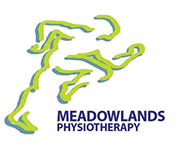Post-Operative Physiotherapy: Techniques and Benefits
Surgical operations, though they intend to correct critical problems, also have the potential to create new injury. Even without complications, operations can be trying and traumatic to your body in ways that require rest and recovery. Physiotherapy is an important tool to help you recover from surgery, complications, as well as the issue that led to the surgery in the first place.
Post-operative physiotherapy is just that: physiotherapy to be completed after surgery. Don’t let its general name fool you. Post-operative physiotherapy should be uniquely attuned to the individual completing it. Since there are many different physiotherapy techniques that may be suited to you depending on your unique circumstances, prepare yourself by learning about the techniques and benefits of post-operative physiotherapy below.
Benefits of Post-Operative Physiotherapy
Overall, participating in post-operative physiotherapy will help you recover more quickly and completely. Not only do you gain professional guidance from the physiotherapist in what movements are off-limits, but you gain the benefits of moving properly whether it’s your leg, back, neck, or other part of your body that underwent surgery. Moving correctly is key to a quick recovery with more mobility and less pain throughout the process.
The benefits that you might expect from post-operative physiotherapy include:
- Minimize scar tissue: Proper healing and motion can actually cut down on the development of scar tissue, making an aesthetic and functional improvement.
- Extend joint function: Joints, like muscles, need to be moved to keep their full range of motion.
- Retrain muscles: Old movement habits may have led you down the wrong path. By retraining muscles, you can reduce pain and improve performance and mobility.
- Boost circulation: Movement of almost any kind boosts circulation and physiotherapy is no different. Improved circulation also translates to faster healing.
Techniques for Post-Operative Physiotherapy
Immediately after surgery, you need to stay mostly still in order to heal properly. Physiotherapists may use manual therapy or gentle techniques to reduce swelling, help with pain management, and start the recovery process.
Once you’re ready to get moving, physiotherapists will help you focus on strength and range of motion. Whichever muscles have been impacted by your surgery, and whichever muscles support the injured area of your body, can be strengthened to offer better support, and to help you avoid repeating the issues that led you to surgery in the first place.
Physiotherapists will also assess and seek to improve your range of motion. It’s normal after many surgeries to fail to fully extend your leg, for example. We’ll set goals to get you back to your maximum range of motion and give you the right exercises to get you there.
The last phase of post-operative physiotherapy is to make sure that you can perform the specific motions you need in order to function for your daily life, work, or sport. Physiotherapists take your goals into account when designing your unique program and may even be able to improve your form and better protect you from future injury.
Not all doctors and surgeons prescribe physiotherapy for postoperative care, even for surgeries where you would certainly see a benefit. Reach out to Meadowlands Physiotherapy today to discuss whether physiotherapy can benefit you. We’re a valuable part of any post-operative recovery team.

